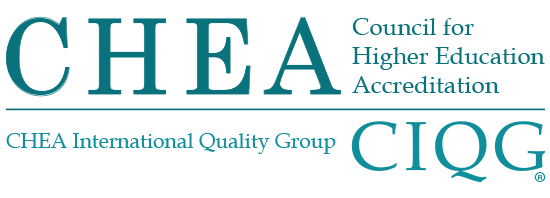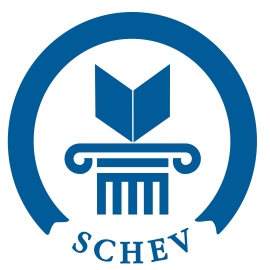Overview
Special Student Relief (SSR) is a suspension of certain regulatory requirements by the secretary of the U.S. Department of Homeland Security (DHS) for an F-1 student from parts of the world that are experiencing emergency circumstances.
There are times when the U.S. government designates a country Temporary Protected Status (TPS) in order to support international students impacted by natural disasters, wars and military conflicts, and national and international financial crises. When the DHS issues a Federal Register Notice authorizing special student relief, students are allowed to apply for work authorization and, once approved, may enroll in fewer credits each quarter.
Eligibility
You must meet ALL of the following conditions:
- You are a citizen of a country specified in a Federal Register Notice (or be an individual having no nationality who last habitually resided in the specified country)
- You must have lawfully resided in the U.S. in F-1 student status on the date of publication of the Federal Register Notice
- You are enrolled in an SEVP-certified academic institution
- You are currently maintaining lawful F-1 student status. This means that you have abided by all of the rules and regulations of your F-1 status as a WUST student
- You are in good academic standing
- You are enrolled in a full course of study
- You are experiencing severe economic hardship as a direct result of the crisis in the specified country
- You are NOT on post-completion OPT
Special Student Relief is different from Severe Economic Hardship. To be eligible for Special Student Relief, you do NOT need to have been in F-1 student status for one academic year, demonstrate that on-campus employment is unavailable or insufficient for your needs, or demonstrate that you will still be able to be enrolled as a full-time student. These are additional requirements of Severe Economic Hardship, but NOT Special Student Relief.
Note about F-2 dependents : An F-2 dependent is NOT authorized to work in the United States, regardless of the employment authorization status of their F-1 student.
Relief Granted
If USCIS approves your application, you will be able to:
- Work for any employer. Your employment does not need to be relevant to your degree program
- Work an increased number of hours while school is in session
- Undergraduate students may reduce their course load, so long as they enroll in a minimum of 2 classes (6 credits minimum)
- Graduate students may reduce their course load, so long as they enroll in a minimum of 1 class (3 credits minimum)
Under the Special Student Relief authorization, these activities will not affect your F-1 status or your post-completion OPT eligibility. Students granted this authorization are still responsible for meeting their on-campus attendance requirements.
How to Apply
Step 1) Make an appointment to meet with Student Services to discuss your financial situation.
After you have met with Student Services and have been given preliminary approval to begin the application process, you can move on to step 2.
Step 2) Request supporting documentation from WUST
Submit an I-20 request form in order to receive an I-20 with a DSO recommendation for severe economic hardship on it. Under “reason for I-20 request,” select “Severe Economic Hardship Application.” You must meet with a Student Services advisor BEFORE requesting an I-20, or the request will be denied.
Submit a Student Verification Letter request form. In the box labeled “purpose of verification letter,” note the letter is for your Severe Economic Hardship application. This letter will serve as evidence that you have been in valid F-1 status for at least one full academic year, are a student in good standing, and are enrolled in a full course of study.
**I-20 and student verification letter requests may take 3-5 business days for processing.
Step 3) Fill out the Form I-821
Fill out Form I-821 to file for employment authorization. Read the instructions sheet before filling out the form.
Step 4) Fill out the Form I-765
Fill out Form I-765 to file for employment authorization. Read the instructions sheet before filling out the form.
On Part 2 of the form, you must enter the correct eligibility category. Write (c)(19) if you are applying for Special Student Relief for the first time. Write (a)(12) if you have previously been approved by USCIS and are applying for re-registration.

Do NOT forget to sign the form! USCIS will deny any application that has not been signed by the student.
Step 5) Gather your required documents
You must submit ALL of the required documentation at the same time. You cannot add documents to your application once you have submitted the application to USCIS. If proper documentation and evidence is missing, your application may be denied.
You will need:
- Student Verification Letter
- Form I-20 with a DSO’s recommendation for economic hardship employment
- Form I-765
- Form I-821
- A letter written by you explaining that:
- employment is necessary to avoid severe economic hardship
- that the hardship is a direct result of the crisis in the specified country
- Any evidence you can provide to support the information in your letter
- Evidence that you reside in the United States (this can include employment records, rent receipts, utility bills, school records, hospital or medical records, U.S. Social Security card, automobile license receipts, vehicle registration and title, insurance policies, etc.)
- Two U.S. passport-style photos
- Fingerprints and digital signature
- Most recent I-94 record (arrival and departure record)
- Photocopy of your passport identification page
- Photocopy of your visa page
- Filing fee for Form I-765 ($410)
- Application fee for Form I-821 ($50)
- Biometric services fee for Form I-821 ($85)
You can pay the fees ($545 total) by money order, personal check, cashier’s check, or credit card using Form G-1450, Authorization for Credit Card Transactions. If you pay by check, you must make your check payable to the U.S. Department of Homeland Security.
Any student who is unable to pay the fee may submit the Form I-912 Request for Fee Waiver along with their Form I-765. Submission of the Form I-912 must include an explanation about why USCIS should grant the fee waiver and the reason(s) for the inability to pay, and any evidence to support the reason(s).
Step 6) Submit your application to USCIS
Once you have all of the documentation required, you can submit
your application to USCIS. Unfortunately, USCIS does not allow
online applications for Special Student Relief for some
countries. You might have to apply by mail. Review the USCIS
mailing instructions to find the correct filing location. This
information varies by country, so be sure to check the
USCIS website
for the most accurate information for your country.
If you are applying by mail, you must write “SPECIAL STUDENT
RELIEF” on the bottom right-hand side of the envelope. Failure
to do so may result in significant processing delays.
Application processing times vary between two to four months. If
your application is approved, USCIS will mail you an Employment
Authorization Document (EAD) card. Do not begin working until
you receive the EAD card. You must notify your DSO when you
receive Special Student Relief approval.
How to Apply
Afghanistan
- Federal Register Notice
- Effective May 20, 2022 through May 20, 2025.
- Student must have been in F-1 status on May 20, 2022
Burma/Myanmar
- Federal Register Notice
- Effective September 27, 2022 through May 25, 2024.
- Student must have been in F-1 status on September 27, 2022
Cameroon
- Federal Register Notice
- Effective June 7, 2022 through December 7, 2023.
- Student must have been in F-1 status on June 7, 2022.
El Salvador
- Federal Register Notice
- Effective September 10, 2023 through March 9, 2025.
- Student must have been in F-1 status on September 10, 2023
Ethiopia
- Federal Register Notice
- Effective December 12, 2022 through June 12, 2024.
- Student must have been in F-1 status on December 12, 2022
Haiti
- Federal Register Notice
- Effective January 26, 2023 through March 9, 2025.
- Student must have been in F-1 status on January 26, 2023
Honduras
- Federal Register Notice
- Effective June 9, 2023 through July 5, 2025.
- Student must have been in F-1 status on June 9, 2023
Nepal
- Federal Register Notice
- Effective May 22, 2018 through June 24, 2025.
- Student must have been in F-1 status on May 22, 2018
Nicaragua
- Federal Register Notice
- Effective June 9, 2023 through July 5, 2025.
- Student must have been in F-1 status on June 9, 2023
Somalia
- Federal Register Notice
- Effective March 13, 2023 through September 17, 2024.
- Student must have been in F-1 status on March 13, 2023
South Sudan
- Federal Register Notice
- Effective March 3, 2022 through November 3, 2023.
- Student must have been in F-1 status on March 3, 2022
Sudan
- Federal Register Notice
- Effective April 19, 2022 through April 19, 2025.
- Student must have been in F-1 status on April 19, 2022
Syria
- Federal Register Notice
- Effective August 1, 2022 through March 31, 2024.
- Student must have been in F-1 status on August 1, 2022
Ukraine
- Federal Register Notice
- Effective April 19, 2022 through April 19, 2025.
- Student must have been in F-1 status on April 19, 2022
Venezuela
- Federal Register Notice
- Effective September 10, 2022 through March 10, 2024.
- Student must have been in F-1 status on September 10, 2022
Yemen
WUST is certified to operate by SCHEV. Accredited by ACCSC.
This institution is approved to offer GI Bill® educational benefits by the Virginia State Approving Agency. “GI Bill® is a registered trademark of the U.S Department of Veterans Affairs (VA). More information about education benefits offered by VA is available at the official U.S. government Website at https://www.benefits.va.gov/gibill/"










.png)
